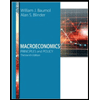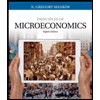Suppose an economy has four sectors: Mining, Lumber, Energy, and Transportation. Mining sells 10% of its output to Lumber, 50% to Energy, and retains the rest. Lumber sells 15% of its output to Mining, 40% to Energy, 20% to Transportation, and retains the rest. Energy sells 30% of its output to Mining, 20% to Lumber, 30% to Transportation, and retains the rest. Transportation sells 10% of its output to Mining, 15% to Lumber, 40% to Energy, and retains the rest. a. Construct the exchange table for this economy. b. Find a set of equilibrium prices for this economy. a. Complete the exchange table below. Distribution of Output from: Mining Lumber Energy Transportation Purchased by: .15 .3 .1 Mining 1 25 .2 .15 Lumber .5 4 .2 4 Energy 0 .2 .3 .35 Transportation (Type integers or decimals.) b. Denote the prices (that is, dollar values) of the total annual outputs of the Mining, Lumber, Energy, and Transportation sectors by PM. PL. PE and PT, respectively. If p+ $100, then PM = SPL = $ (Round to the nearest dollar as needed.) and PE =$
Suppose an economy has four sectors: Mining, Lumber, Energy, and Transportation. Mining sells 10% of its output to Lumber, 50% to Energy, and retains the rest. Lumber sells 15% of its output to Mining, 40% to Energy, 20% to Transportation, and retains the rest. Energy sells 30% of its output to Mining, 20% to Lumber, 30% to Transportation, and retains the rest. Transportation sells 10% of its output to Mining, 15% to Lumber, 40% to Energy, and retains the rest. a. Construct the exchange table for this economy. b. Find a set of equilibrium prices for this economy. a. Complete the exchange table below. Distribution of Output from: Mining Lumber Energy Transportation Purchased by: .15 .3 .1 Mining 1 25 .2 .15 Lumber .5 4 .2 4 Energy 0 .2 .3 .35 Transportation (Type integers or decimals.) b. Denote the prices (that is, dollar values) of the total annual outputs of the Mining, Lumber, Energy, and Transportation sectors by PM. PL. PE and PT, respectively. If p+ $100, then PM = SPL = $ (Round to the nearest dollar as needed.) and PE =$
Chapter1: Introducing The Economic Way Of Thinking
Section: Chapter Questions
Problem 10SQ
Related questions
Question
please answer in text form and in proper format answer with must explanation , calculation for each part and steps clearly

Transcribed Image Text:Suppose an economy has four sectors: Mining, Lumber, Energy, and Transportation. Mining sells 10% of its
output to Lumber, 50% to Energy, and retains the rest. Lumber sells 15% of its output to Mining, 40%
to Energy, 20% to Transportation, and retains the rest. Energy sells 30% of its output to Mining, 20%
to Lumber, 30% to Transportation, and retains the rest. Transportation sells 10% of its output to Mining, 15%
to Lumber, 40% to Energy, and retains the rest.
a. Construct the exchange table for this economy.
b. Find a set of equilibrium prices for this economy.
a. Complete the exchange table below.
Distribution of Output from:
Mining Lumber Energy Transportation
Purchased by:
.15
.3
.1
Mining
1
25
.2
.15
Lumber
.5
4
.2
4
Energy
0
.2
.3
.35
Transportation
(Type integers or decimals.)
b. Denote the prices (that is, dollar values) of the total annual outputs of the Mining, Lumber, Energy, and
Transportation sectors by PM. PL. PE and PT, respectively.
If p+ $100, then PM = SPL = $
(Round to the nearest dollar as needed.)
and PE =$
Expert Solution
This question has been solved!
Explore an expertly crafted, step-by-step solution for a thorough understanding of key concepts.
Step by step
Solved in 2 steps with 1 images

Recommended textbooks for you








Macroeconomics: Principles and Policy (MindTap Co…
Economics
ISBN:
9781305280601
Author:
William J. Baumol, Alan S. Blinder
Publisher:
Cengage Learning

Principles of Microeconomics (MindTap Course List)
Economics
ISBN:
9781305971493
Author:
N. Gregory Mankiw
Publisher:
Cengage Learning